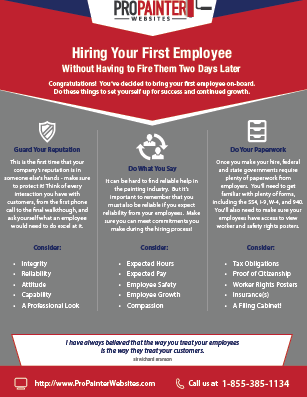Weather Condition Plays A Crucial Role In The Success Of Your Commercial Outside Paint Project-- Find Out Just How It Can Affect The Outcomes
Weather Condition Plays A Crucial Role In The Success Of Your Commercial Outside Paint Project-- Find Out Just How It Can Affect The Outcomes
Blog Article
Posted By-MacKinnon Dohn
When you're preparing a business external painting job, don't ignore the influence of weather condition on your results. You need to consider factors like temperature, moisture, and precipitation, as they can make or break your paint task. For instance, did you understand that perfect problems require details temperature level arrays and humidity levels? Falling short to monitor these facets can result in irregular surfaces or even damage to fresh paint. Recognizing these elements is key to achieving a lasting, expert end result. So, what details weather conditions should you be wary of?
Temperature level Considerations
When it concerns commercial external paint, temperature level plays an essential role in the result of your job. If you're painting in severe heat, the paint can dry too quickly, leading to concerns like poor bond and uneven coatings. https://www.nytimes.com/wirecutter/reviews/best-painters-multi-tool/ wish to aim for temperatures in between 50 ° F and 85 ° F for the best results. Listed below https://professional-exterior-hou98653.humor-blog.com/32224142/examine-why-low-voc-paints-are-becoming-important-for-much-healthier-families-however-are-the-downsides-worth-the-advantages-discover-the-facts-inside , paint may not cure properly, while over 85 ° F, you risk blistering and splitting.
Timing your project with the best temperatures is crucial. Beginning your job early in the morning or later in the mid-day when it's cooler, specifically during hot months.
Additionally, consider the surface temperature; it can be considerably greater than the air temperature, particularly on bright days. Use a surface thermometer to inspect this prior to you start.
If temperatures are uncertain, watch on the weather report. Abrupt temperature level declines or warm front can hinder your plans. You don't want to begin repainting just to have the conditions change mid-project.
Humidity Degrees
Moisture degrees dramatically affect the success of your industrial external paint job. When the moisture is too high, it can hinder paint drying out and curing, causing a series of issues like bad bond and complete high quality.
If you're preparing a work throughout moist problems, you could locate that the paint takes longer to completely dry, which can extend your task timeline and boost costs.
Conversely, reduced moisture can additionally present difficulties. Paint may dry out too promptly, preventing proper application and causing an unequal coating.
You'll wish to keep track of the moisture degrees carefully to ensure you're working within the excellent range, commonly in between 40% and 70%.
To get the best outcomes, take into consideration making use of a hygrometer to determine humidity prior to beginning your task.
If you locate the levels are outside the optimal array, you may require to change your schedule or pick paints created for variable problems.
Always get in touch with the producer's guidelines for specific referrals on humidity tolerance.
Precipitation Impact
Rainfall or snow can dramatically disrupt your industrial exterior paint strategies. When precipitation occurs, it can wash away fresh used paint or create an uneven finish. Ideally, you intend to pick days with dry weather to guarantee the paint sticks effectively and treatments properly. If you're captured in a shower, it's finest to stop the job and wait on problems to enhance.
In addition, snow can be even more damaging. Not only does it produce a damp surface, however it can also reduce temperature levels, making it hard for paint to dry. This can bring about problems like peeling off or blistering down the line.
It's important to inspect the weather forecast before starting your task. If rainfall or snow is forecasted, take into consideration rescheduling.
Constantly keep in mind to permit appropriate drying time in between layers, especially if the weather condition remains unforeseeable.
Final thought
To conclude, watching on the climate is essential for a successful industrial outside painting project. By checking temperature, humidity, and rainfall, you can guarantee the best conditions for application and curing. Remember to prepare your job around desirable climate and always follow manufacturer guidelines. With the ideal approach, you'll attain a long-lasting, beautiful coating that can stand up to the aspects. Don't let the weather condition catch you off-guard-- remain informed and repaint clever!
